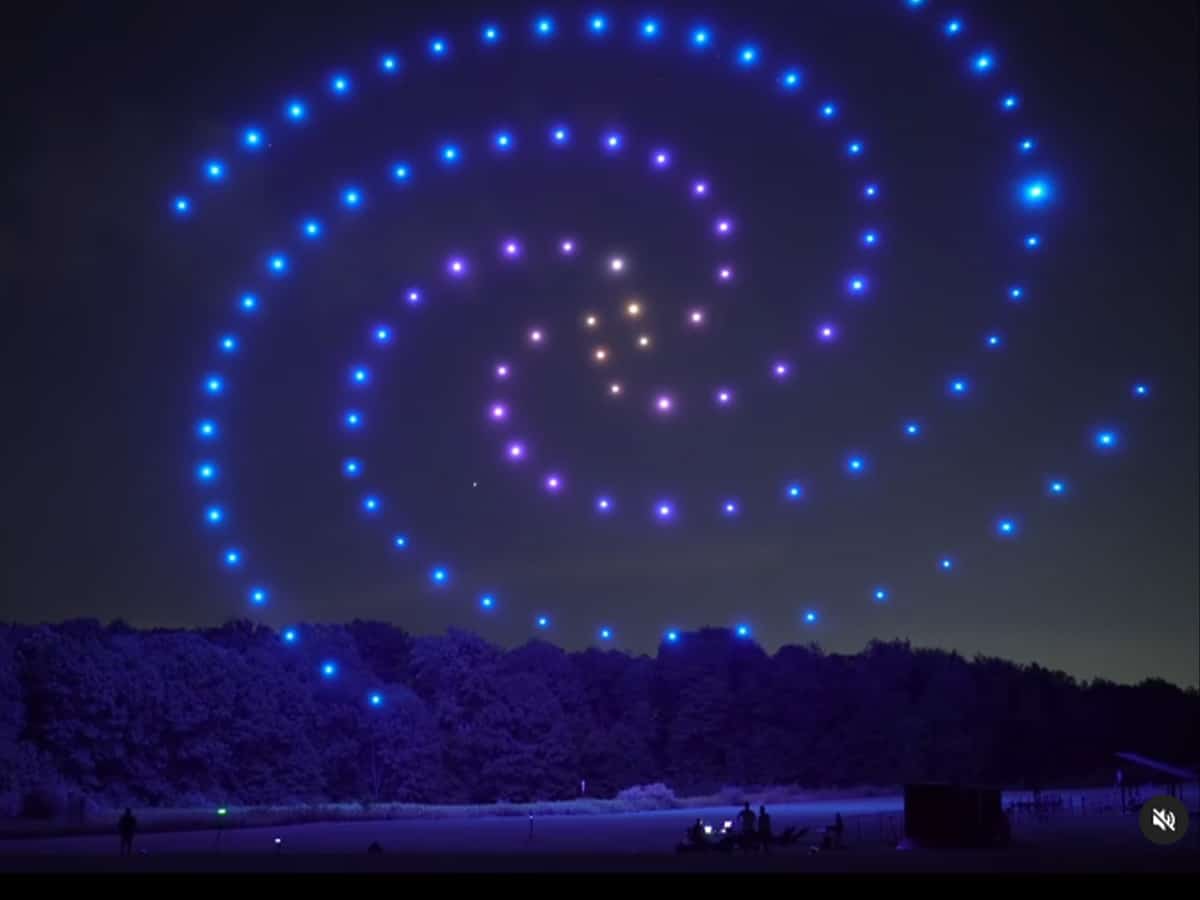Drone shows: Imagine hundreds of drones painting breathtaking images across the night sky, synchronized to music and telling a story. This isn’t science fiction; it’s a rapidly evolving entertainment and advertising technology, combining cutting-edge engineering with artistic creativity. We’ll explore the technology, design, safety, business aspects, and future of this captivating spectacle.
Planning a killer drone show? You’ll need reliable drones, and the ae86 pro max drone is a solid choice for its power and maneuverability. Its features make it perfect for creating complex and stunning light shows, ensuring your drone show will be unforgettable. So, get your show ready and dazzle your audience!
From the intricate software controlling each drone’s movements to the captivating choreography that brings stories to life, we’ll delve into every aspect. We’ll examine the legal requirements, safety protocols, and marketing strategies needed to make a drone show a success, and we’ll look at inspiring examples of past shows and future possibilities.
Drone Show Technology
Drone shows rely on sophisticated technology to deliver breathtaking aerial displays. Understanding this technology is crucial for anyone involved in planning, executing, or appreciating these spectacular events. This section delves into the core components, from the drones themselves to the complex software orchestrating their movements.
Drone Types in Drone Shows
Various drone types are employed in drone shows, each with its strengths and weaknesses. The choice depends on factors like show scale, budget, and desired effects.
- Quadcopters: The most common type, offering a good balance of maneuverability, payload capacity, and cost-effectiveness.
- Hexacopters and Octacopters: Provide increased redundancy and stability, particularly beneficial for larger, more complex shows or challenging weather conditions.
- Specialized Drones: Some shows may utilize drones with unique features like enhanced lighting systems or increased flight time for extended performances.
Software and Hardware for Drone Shows
A successful drone show hinges on a robust interplay of hardware and software. This includes the drones themselves, ground control stations, and specialized software for choreography and control.
- Drones: Each drone needs a GPS module, flight controller, and integrated lighting system (usually LEDs).
- Ground Control Station (GCS): A powerful computer system with software to control all drones simultaneously, often utilizing a high-bandwidth, low-latency network.
- Flight Control Software: This software translates the choreographed sequence into real-time commands for each drone, handling aspects like positioning, speed, and lighting.
- Show Design Software: This allows for easy creation and visualization of the drone formations and patterns.
Drone Show Control Systems
Different control systems offer varying levels of complexity and capabilities. The choice often depends on the scale and complexity of the show.
- Centralized Control: A single GCS controls all drones, offering precise synchronization but posing a single point of failure risk.
- Decentralized Control: Multiple GCSs manage smaller groups of drones, increasing redundancy and robustness.
- Hybrid Systems: Combine aspects of both centralized and decentralized control for optimal performance and reliability.
Synchronizing Drone Movements and Lighting
Precise synchronization of drone movements and lighting effects is crucial for creating a cohesive and visually stunning show. This requires a sophisticated system capable of managing real-time data streams and executing commands with millisecond precision.
- Time-Synchronized Commands: All drones receive commands at precisely the same time to maintain formation and lighting coherence.
- Redundancy and Fail-Safes: Mechanisms are in place to handle potential communication or hardware failures, ensuring the show can continue without disruption.
- Real-time Feedback and Adjustment: The system should be able to monitor drone status and adjust commands accordingly to maintain optimal performance.
Drone Show Programming Flowchart
Programming a drone show sequence involves a series of steps, best visualized through a flowchart. This flowchart Artikels the key stages from initial concept to final execution.
(A detailed flowchart would be included here, depicting steps such as show design, choreography creation, software programming, testing, and final execution.)
Drone Show Design and Choreography
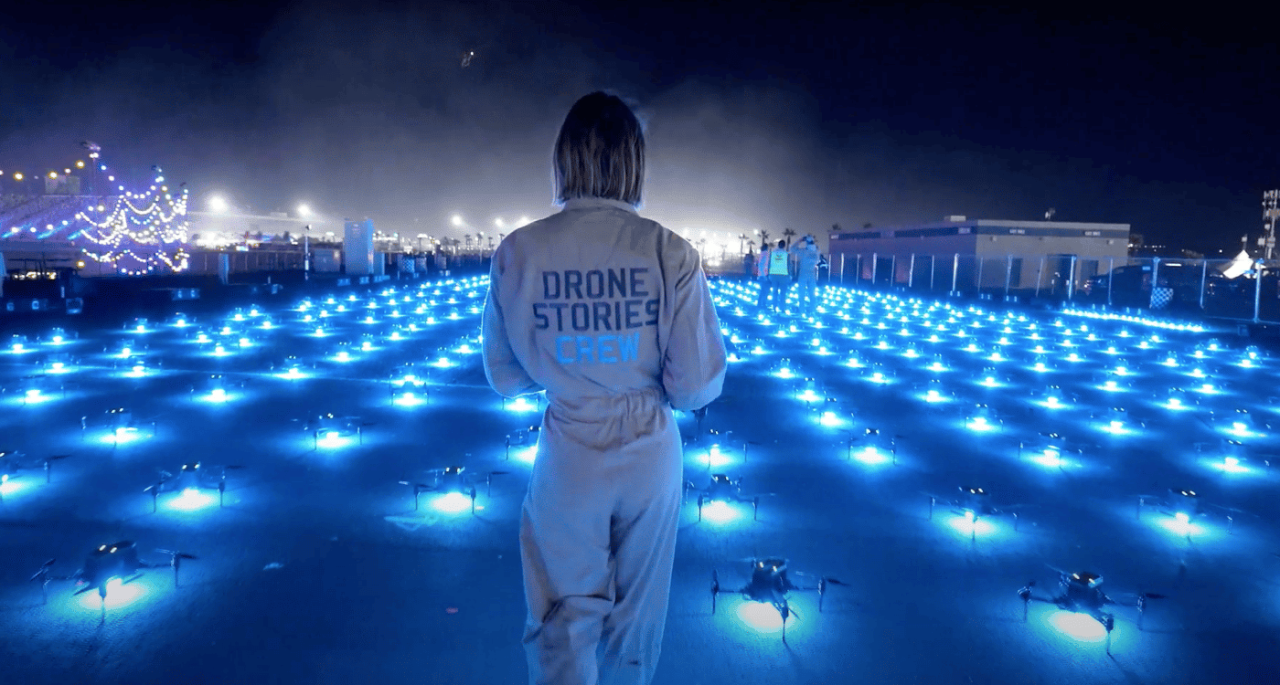
The artistry of a drone show lies in its design and choreography. Transforming a concept into a captivating visual narrative requires creativity, technical expertise, and meticulous planning.
Creative Drone Show Formations and Patterns
Drone shows are capable of creating a wide array of stunning visual effects. Examples include geometric patterns, moving shapes, 3D formations, and even representations of famous landmarks or logos.
- Geometric Patterns: Simple yet elegant designs, creating mesmerizing visual effects.
- Moving Shapes: Dynamic formations that morph and evolve throughout the show.
- 3D Formations: Complex shapes and structures that appear to float in three-dimensional space.
- Representational Images: Drones can create images or logos, adding a unique dimension to the show.
Designing a Compelling Narrative
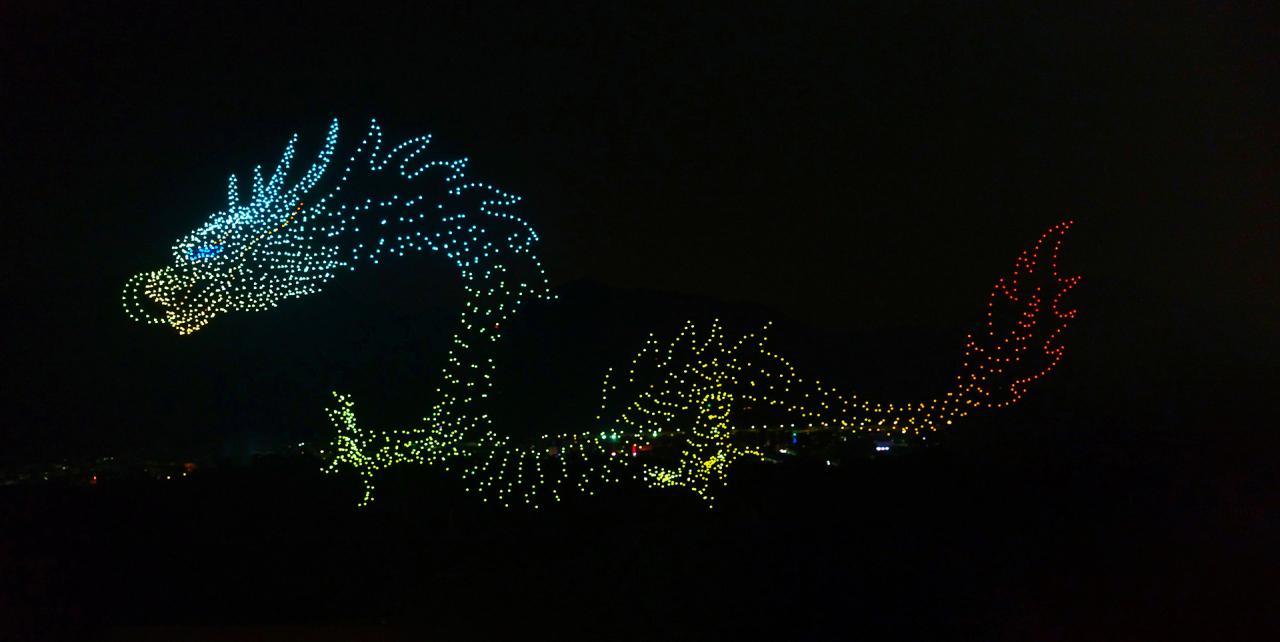
A strong narrative enhances the emotional impact of a drone show. This involves weaving a story or theme through the visuals, music, and lighting effects.
- Storytelling through Formations: Using formations to visually represent different scenes or events in the narrative.
- Emotional Impact: Utilizing lighting and music to evoke specific emotions in the audience.
- Thematic Unity: Ensuring that all elements of the show contribute to the overall theme or message.
Translating Concept into Choreography
The process of translating a concept into a drone show choreography involves several key steps, from initial brainstorming to final refinement.
- Concept Development: Defining the show’s theme, narrative, and desired visual effects.
- Sketching and Storyboarding: Creating visual representations of the show’s key moments and transitions.
- Software Implementation: Translating the storyboard into a sequence of commands for the drones.
- Testing and Refinement: Iteratively refining the choreography based on testing and feedback.
Creating a Drone Show Storyboard
A storyboard serves as a blueprint for the drone show choreography. It provides a visual representation of the sequence, outlining the key formations, transitions, and lighting effects.
(A description of a sample storyboard would be included here, detailing the use of sketches or diagrams to illustrate the progression of the drone show.)
Music and Sound Effects
Music and sound effects significantly enhance the visual impact of a drone show, adding emotional depth and synchronizing the experience.
- Music Selection: Choosing music that complements the show’s theme and enhances the emotional impact.
- Synchronization: Aligning music and sound effects with the drone movements and lighting changes.
- Sound Design: Creating custom sound effects to complement the visual elements.
Drone Show Safety and Regulations
Safety and compliance are paramount in drone show operations. Understanding potential hazards and adhering to regulations are essential for ensuring a safe and successful event.
Potential Safety Hazards
Several potential safety hazards need to be addressed during drone show operations. These include drone malfunctions, collisions, and risks to spectators and property.
- Drone Malfunctions: Mechanical or software failures can lead to unexpected drone behavior.
- Collisions: Collisions between drones or with obstacles can cause damage or injury.
- Spectator Safety: Ensuring that spectators are at a safe distance from the drone flight area.
- Property Damage: Preventing damage to property or infrastructure during the show.
Safety Protocols and Procedures
Rigorous safety protocols and procedures are essential for mitigating risks associated with drone shows.
- Pre-flight Checks: Thorough inspections of all drones and equipment before each show.
- Emergency Procedures: Established protocols for handling unexpected events, such as drone malfunctions or loss of control.
- Communication Systems: Reliable communication between the ground crew and drone operators.
- Weather Monitoring: Careful monitoring of weather conditions to ensure safe flight conditions.
Legal and Regulatory Requirements
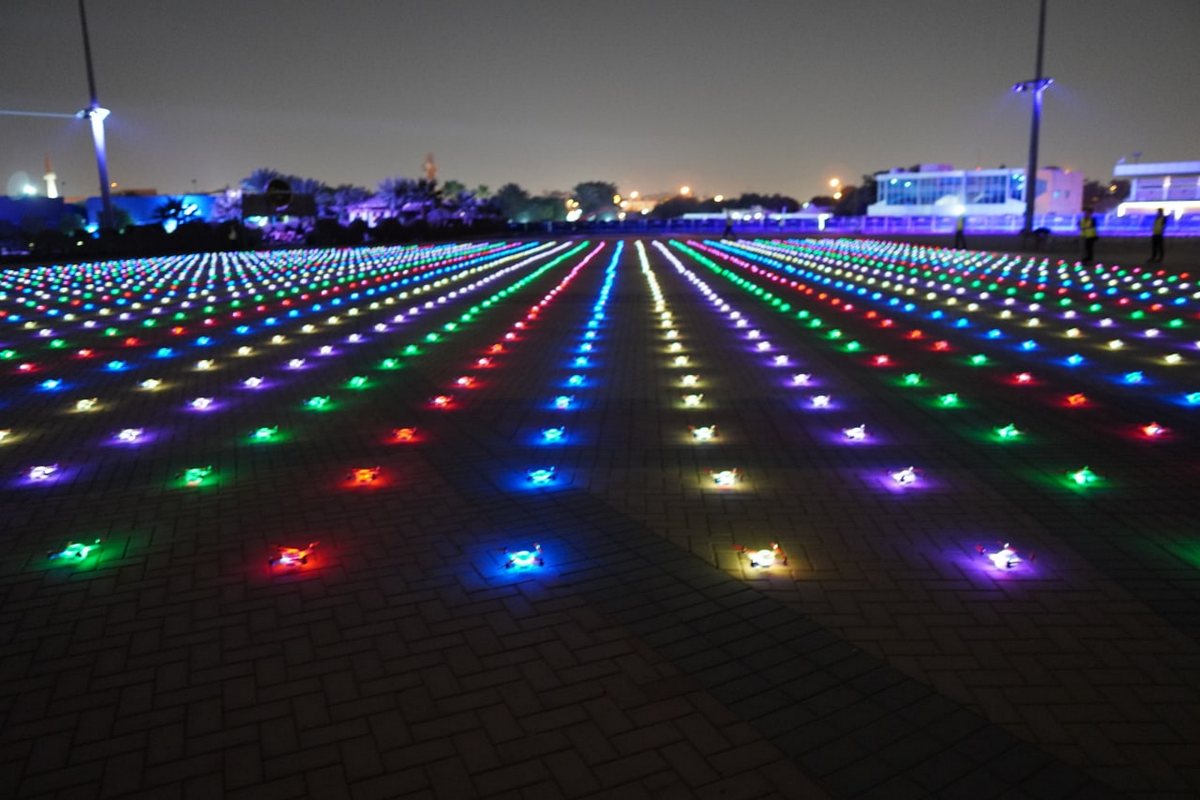
Drone shows are subject to various legal and regulatory requirements that vary depending on location. These regulations often address airspace restrictions, flight permits, and safety standards.
- Airspace Restrictions: Obtaining necessary permits and approvals for operating drones in controlled airspace.
- Flight Permits: Securing the necessary permissions to conduct drone flights in specific locations.
- Safety Standards: Adhering to safety guidelines and best practices for drone operation.
- Insurance: Having adequate insurance coverage to protect against potential liabilities.
Drone Show Safety Checklist
A comprehensive checklist ensures that all necessary safety measures are implemented before, during, and after the drone show.
(A detailed checklist would be included here, covering pre-flight checks, emergency procedures, communication protocols, weather monitoring, and post-flight inspections.)
International Drone Show Regulations
Regulations governing drone shows vary significantly across different countries. This table provides a comparison of key aspects.
| Country | Airspace Restrictions | Permitting Requirements | Safety Standards |
|---|---|---|---|
| USA | Vary by location (FAA regulations) | Section 333 exemption or Part 107 certification often required | FAA guidelines |
| UK | CAA regulations | Permission for Commercial Operations often required | CAA guidelines |
| Canada | Transport Canada regulations | Special Flight Operations Certificate (SFOC) often required | Transport Canada guidelines |
| Australia | CASA regulations | Remote Pilot License (RePL) and operational approvals often required | CASA guidelines |
Drone Show Business and Marketing
Building a successful drone show business requires a strong understanding of marketing, pricing, and business models. This section explores strategies for attracting clients, setting prices, and establishing a sustainable business.
Marketing and Promotion Strategies
Effective marketing is crucial for attracting clients and building brand recognition within the drone show industry.
- Online Marketing: Utilizing websites, social media, and online advertising to reach potential clients.
- Networking: Building relationships with event planners, venues, and other industry professionals.
- Portfolio Development: Creating a strong portfolio showcasing past drone show performances.
- Public Relations: Generating media coverage and positive publicity for the business.
Business Model for a Drone Show Company
Several business models can be adopted by drone show companies, each with its own advantages and disadvantages.
Drone shows are becoming increasingly popular, offering spectacular visuals without the environmental impact of traditional fireworks. If you’re looking for inspiration on breathtaking displays, check out some amazing examples of drone fireworks China has produced. These innovative shows often push the boundaries of what’s possible with drone technology, influencing the future of drone show design worldwide.
- Project-Based Model: Charging clients per event based on the show’s complexity and duration.
- Subscription Model: Offering recurring services to clients for regular drone show performances.
- Hybrid Model: Combining aspects of both project-based and subscription models.
Pricing Strategies for Drone Show Services
Pricing for drone show services should reflect the cost of equipment, personnel, and production while remaining competitive.
- Cost-Plus Pricing: Calculating the total cost of the show and adding a markup for profit.
- Value-Based Pricing: Setting prices based on the perceived value of the service to the client.
- Competitive Pricing: Setting prices based on the rates of competitors in the market.
Marketing Plan for a New Drone Show Business
A comprehensive marketing plan Artikels strategies for reaching target audiences, building brand awareness, and generating leads.
(A sample marketing plan would be included here, detailing target audience identification, marketing channels, messaging, and budget allocation.)
Successful Drone Show Marketing Campaigns
Examples of successful drone show marketing campaigns highlight effective strategies for attracting clients and generating buzz.
(Examples of successful campaigns would be discussed here, highlighting their strategies, results, and key takeaways.)
Drone Show Visual Effects and Lighting
The visual spectacle of a drone show is largely defined by its lighting and visual effects. Understanding lighting technologies and techniques is crucial for creating a captivating and memorable experience.
Creating Stunning Visual Effects
Drone shows can achieve a wide range of stunning visual effects through skillful manipulation of lighting, formations, and choreography.
- Dynamic Formations: Choreographing drones to create constantly evolving shapes and patterns.
- Color Transitions: Smoothly shifting between colors to create a sense of fluidity and movement.
- Light Painting: Using drones to create streaks of light across the night sky.
- 3D Effects: Creating the illusion of three-dimensional shapes and structures.
Impact of Different Lighting Technologies
Various lighting technologies impact the visual experience in distinct ways.
Drone shows are amazing spectacles of light and technology, offering breathtaking visuals. Planning your next event? You might need to know when to schedule it, so maybe check out this link to find out when is season 3 of squid game because that’ll probably influence viewing habits and therefore optimal show times. After all, a successful drone show needs the right audience!
- LEDs: Offer a wide range of colors and brightness levels, enabling complex and dynamic light shows.
- RGB LEDs: Allow for precise color mixing, enabling subtle color transitions and gradients.
- High-Intensity LEDs: Provide increased brightness and visibility, especially in brightly lit environments.
Lighting Control Systems
Different lighting control systems offer varying levels of sophistication and control over the drone lights.
- Software-Based Control: Allows for precise control over individual drone lights and synchronization with drone movements.
- Hardware-Based Control: Offers simpler control but may lack the flexibility of software-based systems.
- DMX Control: A standard protocol for controlling lighting fixtures, offering compatibility with existing lighting infrastructure.
Color Grading and Post-Processing
Color grading and post-processing can significantly enhance the visual impact of drone show footage.
- Color Correction: Adjusting colors to ensure consistency and accuracy.
- Color Grading: Applying stylistic color changes to create a desired mood or atmosphere.
- Visual Effects: Adding visual effects to enhance the overall aesthetic appeal.
Tips for Optimizing Visual Impact
- Consider the background environment and lighting conditions.
- Use a variety of colors and lighting effects to create visual interest.
- Ensure smooth transitions between different formations and lighting effects.
- Experiment with different lighting patterns and techniques.
- Pay attention to detail and strive for perfection.
Drone Show Case Studies and Examples
Analyzing successful drone shows provides valuable insights into innovative technologies, creative approaches, and effective strategies. This section explores specific examples and their key aspects.
Memorable Drone Show Description
(A detailed description of a memorable drone show would be included here, focusing on its visual elements, narrative, technical aspects, and overall impact. For example, a show incorporating innovative formations, lighting effects, or storytelling techniques could be discussed.)
Innovative Drone Show Technology
(A description of a drone show that utilized innovative technology would be included here. This could focus on aspects such as advanced flight control systems, unique lighting effects, or novel drone designs.)
Challenges Overcome in Production
(A description of a complex drone show and the challenges overcome during its production would be included here. This could include logistical hurdles, technical difficulties, or creative obstacles.)
Drone shows are awesome, right? But have you thought about the business side? If you’re interested in learning more about the commercial applications and opportunities in this rapidly growing field, check out this link to Drone Fair Canada: business opportunities abound! Then, you can plan your next amazing drone show knowing the market is ready for more spectacular displays.
Insights from Industry Professionals
(Quotes or summaries of interviews with professionals involved in the drone show industry would be included here, providing insights into their experiences, perspectives, and advice.)
Comparative Analysis of Drone Show Productions
| Drone Show A | Drone Show B |
|---|---|
| (Description of Drone Show A, highlighting its key features and aspects) | (Description of Drone Show B, highlighting its key features and aspects) |
| (Comparison of the two shows, focusing on their strengths and weaknesses) | (Comparison of the two shows, focusing on their strengths and weaknesses) |
Outcome Summary
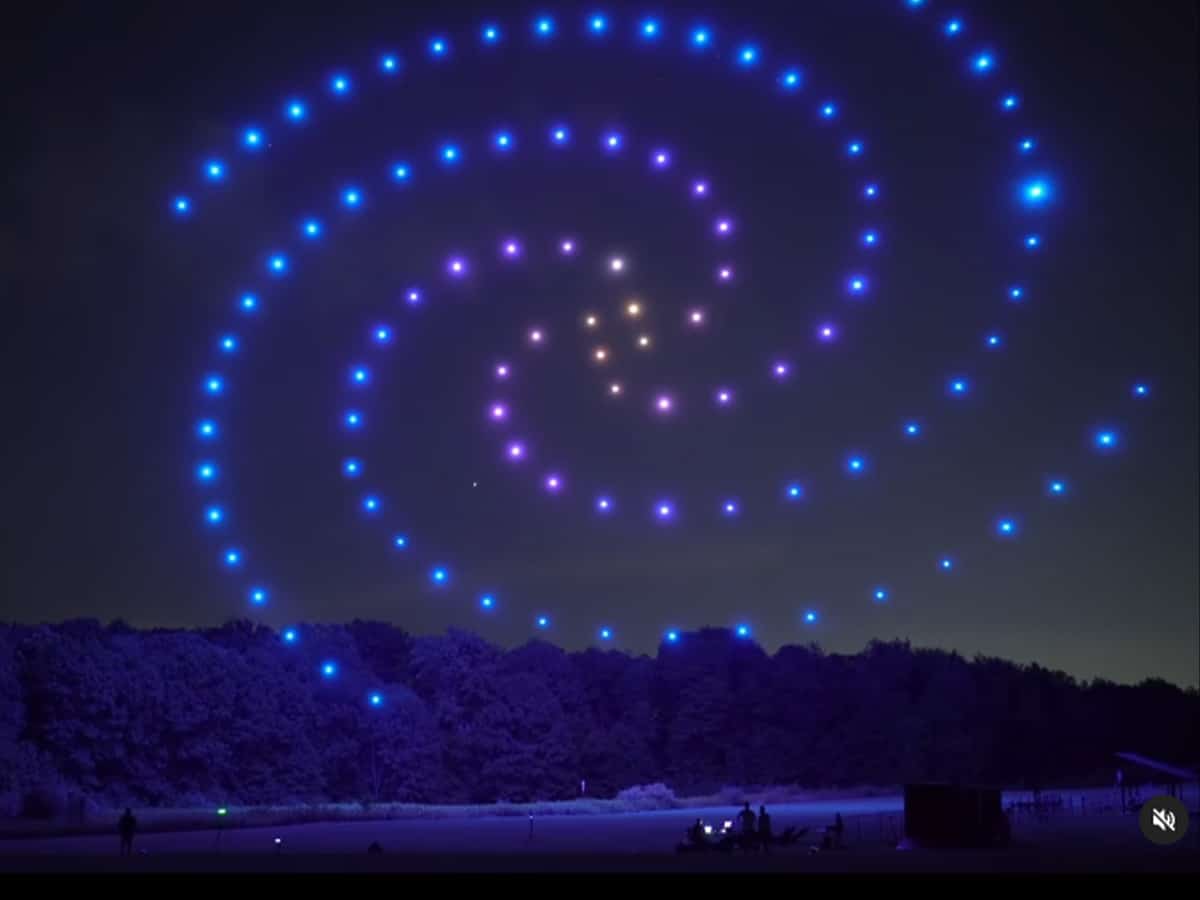
Drone shows are more than just a dazzling display; they represent a fusion of technology, art, and entertainment. As technology advances, the possibilities for creativity and scale are limitless. Whether you’re a budding entrepreneur, a technology enthusiast, or simply captivated by the beauty of a well-executed drone show, the future of this industry promises to be as bright and dynamic as the shows themselves.
We hope this overview has ignited your interest and provided a solid foundation for further exploration.
General Inquiries
How much does a drone show cost?
Costs vary wildly depending on the number of drones, show duration, complexity of choreography, and location. Expect a significant investment.
What kind of permits are needed for a drone show?
Permits vary greatly by location and often involve FAA (or equivalent) approval, airspace restrictions, and local permits. Consult with aviation authorities well in advance.
How long does it take to plan a drone show?
Planning can take several weeks or even months, depending on the show’s scale and complexity. Choreography, programming, and obtaining necessary permits all require considerable time.
What happens if a drone malfunctions during a show?
Most drone show systems have redundancy built in. Individual drone failures rarely impact the entire show, though there are protocols in place to address such issues safely.
